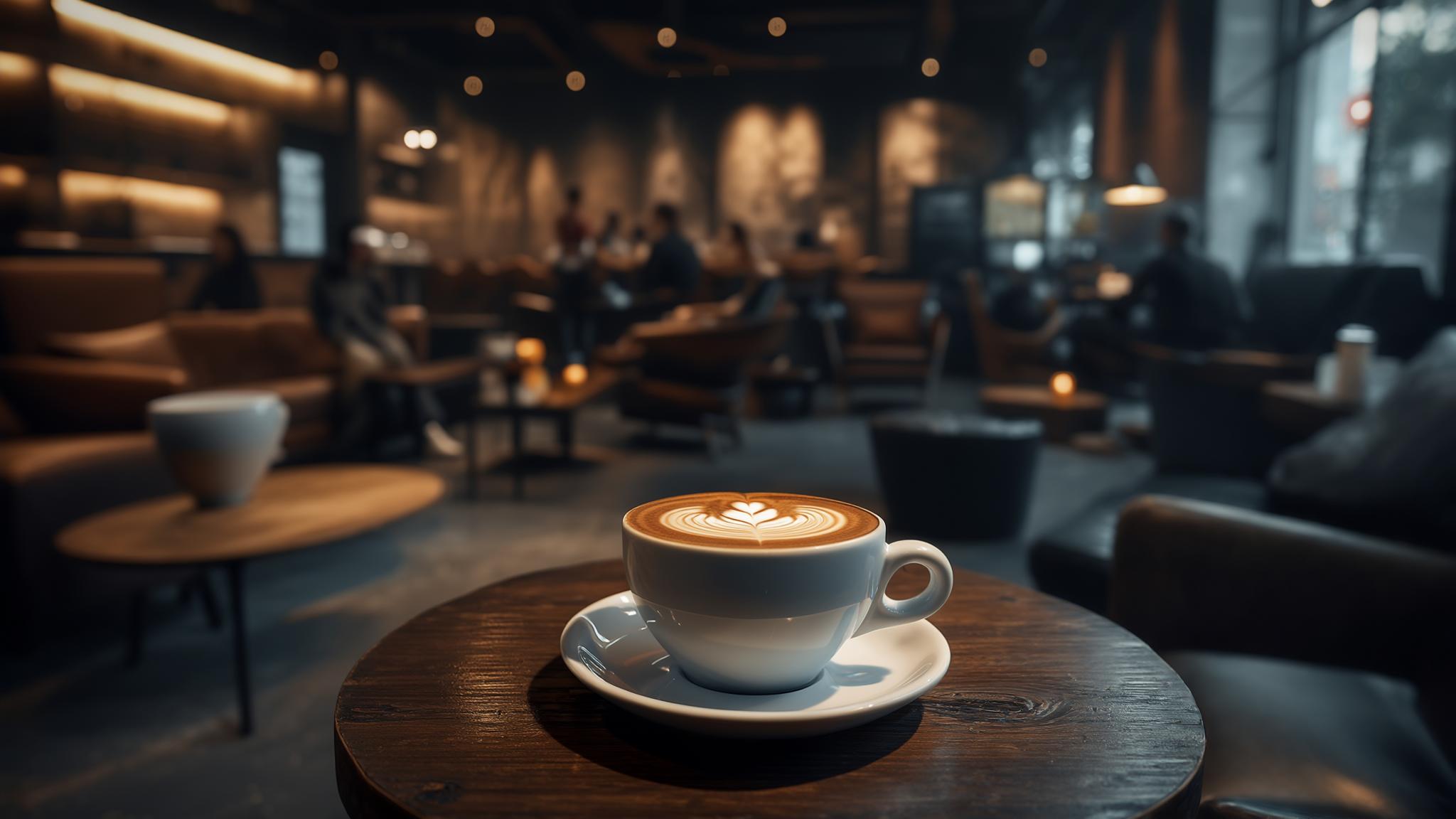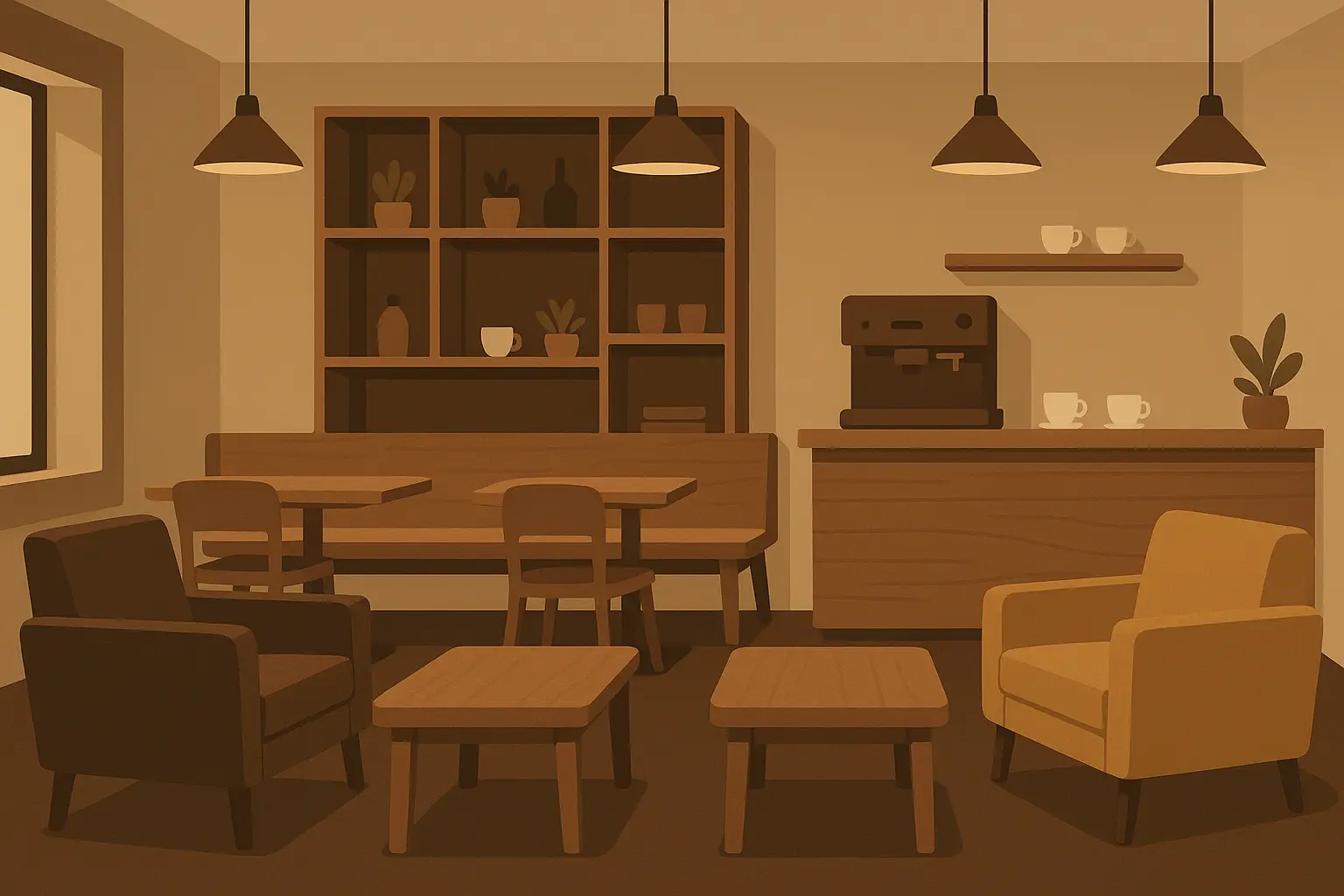
Table of Contents
-
Understanding the Business Foundation That Actually Works
-
Building Your Coffee Philosophy Beyond Just Good Beans
-
Creating Spaces People Actually Want to Stay In
-
Mastering Operations Without Losing Your Mind
-
Turning Customers Into Your Biggest Advocates
-
Making Money Beyond Just Selling Coffee
-
Growing Smart in a Competitive Market
-
Marketing That Actually Brings People Through Your Door
-
The Technical Side: Equipment and Quality Control
-
Seasonal Strategies That Keep People Coming Back
-
How The Right Marketing Partner Can Transform Everything
TL;DR
-
Coffee lounges succeed by treating coffee as an experience worth studying, not just something to gulp down on your way to work
-
Your space design literally determines whether customers grab and go or settle in for hours (and spend way more money)
-
Staff training in coffee knowledge and customer service creates the foundation for everything else – trust me on this one
-
Multiple ways to make money (retail, events, workshops) protect you when coffee sales slow down
-
Community engagement through education and partnerships builds the kind of loyalty that survives bad Yelp reviews
-
Digital presence and ordering systems aren’t nice-to-haves anymore – they’re survival tools
-
Quality control systems ensure consistency even when you’re running errands or taking a day off
-
Seasonal offerings create that “limited time only” buzz that gets people posting on social media
-
Understanding your local market and tracking the right numbers guides smart business decisions instead of gut feelings
Understanding the Business Foundation That Actually Works
The Real Story Behind Coffee Shop Success
Last month, I walked past another empty storefront where a coffee shop used to be. The owner had been so excited when they opened—posting daily on Instagram about their “artisanal blends” and “curated experience.” But six months later? Gone. It got me thinking about what actually separates the coffee shops that become neighborhood staples from the ones that just… don’t make it.
Here’s what I’ve figured out: running a successful coffee lounge isn’t really about having the best beans in town (though that definitely helps). You’re selling an experience, a place where people feel like they belong, and a story worth sharing with friends. Case Study Coffee Lounge gets this completely. They opened just four months ago in Phoenix but they’ve already become the kind of place where people say “let’s meet at Case Study” instead of just “let’s get coffee somewhere.”
Look, I’ll be honest – this mirrors what we see when businesses try to figure out their marketing budget. If you don’t understand your financial foundation, you’re basically gambling with rent money. And in Phoenix? You’re competing with over 30 coffee shops in central Phoenix alone. That’s a lot of options for people who just want their morning caffeine fix.
The foundation of a successful coffee lounge goes way beyond making good coffee. You need to understand experience design (sounds fancy, but it’s really just making people feel good), community building (being genuinely useful to your neighbors), and business operations that actually work when you’re not physically there 24/7.
Building Your Unique Market Position
Your coffee lounge needs to stand for something specific. You can’t be everything to everyone – trust me, I’ve seen people try, and it never ends well. Case Study Coffee Lounge positions itself around the idea that coffee deserves serious study. Each bean variety, roasting technique, and brewing method becomes part of an ongoing investigation.
This isn’t just marketing fluff, either. When you position your business around curiosity and education, everything else starts making sense. Your staff becomes more knowledgeable because they have to be. Your customers get more engaged because they’re learning something. Your brand develops an actual personality that people remember instead of just being “that coffee place with the blue sign.”
Similar to how market sizing strategies help businesses identify their true opportunity, Case Study Coffee identified their niche in the educational coffee experience.
Think about what makes your approach different. Maybe you’re obsessed with sustainable sourcing, or you’re the spot that celebrates local artists, or you cater specifically to remote workers who need reliable WiFi and don’t mind if people take phone calls. Whatever it is, make it crystal clear and stick to it consistently.
Here’s the thing though – successful positioning means choosing one specific angle that actually resonates with your target market and then delivering on that promise through every single aspect of your business. Not just the Instagram posts, but the actual day-to-day operations.
|
What You Stand For |
Who This Attracts |
What Makes You Different |
How This Affects Your Bottom Line |
|---|---|---|---|
|
Educational Focus |
Coffee nerds, curious people |
Expert knowledge, workshops |
You can charge more because you’re teaching |
|
Community Hub |
Locals, remote workers |
Events, coworking vibes |
Multiple ways to make money |
|
Artisan Craft |
Quality-conscious folks |
Handcrafted everything, local partnerships |
Higher margins on specialty items |
|
Convenience-First |
Busy professionals |
Speed, mobile ordering, grab-and-go |
High volume, quick turnover |
Building Your Coffee Philosophy Beyond Just Good Beans
Treating Coffee as a Subject Worth Studying
Customers can absolutely taste the difference when you actually care about what you’re serving. But here’s the thing – caring isn’t enough. You need systems and real knowledge to back it up, or you’re just another place with good intentions and inconsistent results.
Your coffee philosophy should influence everything from which suppliers you work with to how you train your staff. When you treat each cup as part of an ongoing investigation into flavor profiles, you create opportunities for customer education and engagement that your competitors completely miss. Case Study Coffee demonstrates this by positioning each brewing method and bean selection as part of a larger educational experience, not just “here’s your drink, that’ll be $4.50.”
This means actually understanding origin stories, processing methods, and how different brewing techniques highlight different characteristics. Your team should be able to explain why that Ethiopian coffee tastes fruity or why cold brew brings out chocolate notes in certain beans. Case coffee enthusiasts will pay premium prices for this kind of expertise, and casual drinkers appreciate learning something new.
A genuine coffee philosophy transforms your business from just another place that sells caffeine into an educational experience. This creates deeper customer relationships and justifies charging more because you’re providing expertise and storytelling along with the actual product.
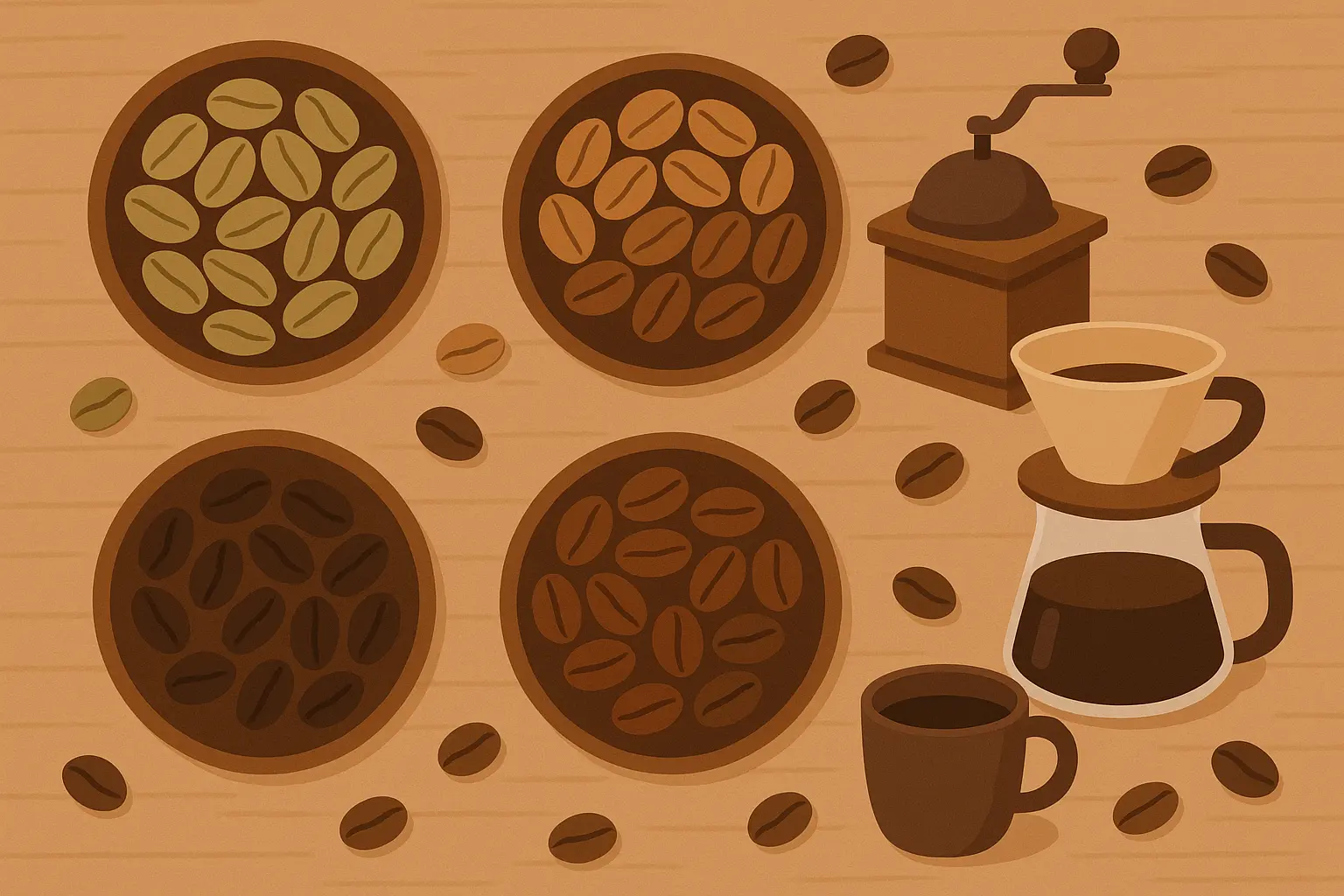
The Art of Curation Over Volume
You don’t need 47 different coffee options. Seriously, you don’t. You need the right coffee options, presented in a way that helps customers discover something new while still getting what they love without feeling overwhelmed.
Curation means making deliberate choices about what you offer and being able to explain those choices when someone asks. Maybe you rotate single-origin offerings monthly, or you develop signature blends that showcase your roasting philosophy, or you focus on specific regions during certain seasons.
Case Study Coffee Lounge nails this with their signature drinks. Their “brown sugar sage” latte has become their best-seller by offering a unique alternative to the standard vanilla latte that every other place serves. They also feature house-made syrups including “lavender thyme and bergamot vanilla” alongside seasonal flavors. This shows how thoughtful curation creates memorable experiences instead of decision paralysis.
The key is having a story behind every choice. When customers understand why you selected particular beans or brewing methods, they become invested in your decision-making process. It’s like having a knowledgeable friend recommend a book – you’re more likely to trust it and remember the experience.
Strategic curation of coffee offerings, supported by clear storytelling and educational context, creates more engaging customer experiences than overwhelming choice while establishing your expertise and brand identity.
Creating Spaces People Actually Want to Stay In
Understanding customer behavior through advanced analytics helps coffee lounges figure out how to design their space for maximum customer satisfaction and, let’s be real, maximum revenue too.
Designing for Different Types of Customers
Your space needs to work for the 7 AM rush crowd, the afternoon laptop warriors, and the evening “let’s catch up over coffee” groups. This requires intentional design choices that most coffee shops completely mess up.
Seating arrangements matter way more than you’d think. You need quick-turnover spots near the counter for people who just want to grab their drink and run. You need comfortable work areas with power outlets that actually work for remote workers (please test your outlets regularly). And you need conversation-friendly spaces for social meetings where people don’t have to whisper.
Lighting affects everything from whether people can take decent Instagram photos to whether they can actually be productive on their laptops. Acoustic planning determines whether people can take phone calls or if everyone has to communicate through hand gestures. These details seem small until you realize they’re literally driving customer behavior and repeat visits.
The story behind Case Study Coffee Lounge shows how space design sometimes evolves from necessity. Owner William Douglas originally had a woodworking showroom, but he had to pivot when he “developed an allergy to most trees” after a decade in the industry. So he transformed his furniture showroom into a coffee space that showcases his craftsmanship while serving the community. Sometimes the best spaces come from unexpected circumstances.
Successful space design means understanding different customer needs throughout the day and creating distinct areas that serve specific purposes while still feeling like one cohesive space that represents your brand.
The Psychology of Atmosphere
People make emotional decisions about where to spend their time and money. Your atmosphere either supports every other business decision you make, or it undermines all of them. There’s really no middle ground here.
I remember sitting in this one coffee shop where everything looked Instagram-perfect—exposed brick, Edison bulbs, the works. But the music was so loud I couldn’t think, and the chairs were those trendy metal ones that made my back ache after 20 minutes. Beautiful? Sure. But I never went back. Meanwhile, there’s this slightly shabby place near my house with mismatched furniture and a temperamental espresso machine, but somehow it just feels right. That’s the difference atmosphere makes.
Temperature, music volume, how the place smells, visual elements – they all contribute to whether customers feel comfortable staying longer. And here’s the thing: longer stays typically mean higher spending and stronger emotional connections to your brand.
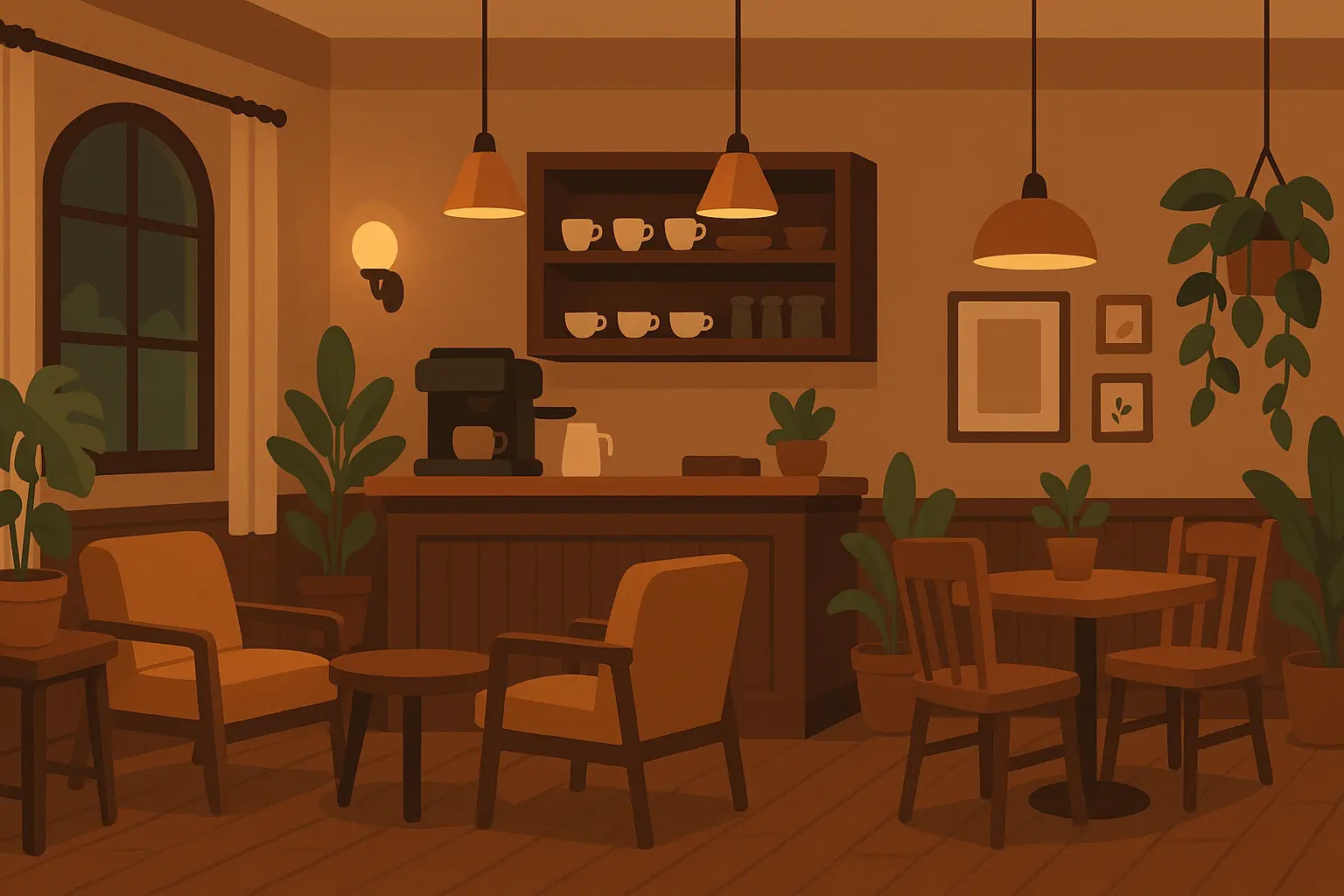
Creating the right atmosphere involves orchestrating sensory elements to generate specific emotional responses that encourage longer stays, higher spending, and stronger brand loyalty. It’s psychology, but the practical kind that actually affects your revenue.
Coffee Shop Atmosphere Checklist:
-
Keep temperature between 68-72°F (people leave if they’re uncomfortable)
-
Background music at conversational volume (60-70 decibels – loud enough to create energy, quiet enough for phone calls)
-
Multiple lighting zones for different activities throughout the day
-
Comfortable seating for various group sizes (not just two-tops and bar stools)
-
Clear sight lines to counter and exits (people get anxious when they feel trapped)
-
Pleasant, consistent aroma throughout the space (coffee, obviously, but not overwhelming)
-
Visual elements that actually support your brand identity instead of generic coffee shop decor
-
Smart noise management between different areas (work zones vs. social zones)
Mastering Operations Without Losing Your Mind
Supply Chain Management That Actually Works
Managing coffee inventory is way trickier than most people realize when they’re dreaming about opening their own place. Coffee beans have peak freshness windows, seasonal availability changes, and customer preferences shift throughout the year. Miss any of these factors and you’re either throwing away stale coffee or disappointing customers.
You need relationships with reliable suppliers who actually understand your quality standards and delivery requirements. This means more than just finding the cheapest beans – it means finding partners who can maintain consistency and give you a heads up about availability issues before they become “sorry, we’re out of that” problems.
Inventory tracking systems prevent both running out of popular items and watching expensive coffee go stale on your shelves. You’ll need to understand turnover rates for different products, storage requirements for maintaining freshness, and ordering schedules that account for delivery times and seasonal variations.
Look, effective supply chain management requires building strategic supplier relationships, implementing inventory tracking systems that you’ll actually use, and understanding the unique challenges of coffee freshness and seasonal availability. The goal is maintaining quality while minimizing waste, which directly affects your profit margins.
Staff Training That Creates Coffee Experts
Your team needs to know more than how to operate the espresso machine without breaking it. They need to understand coffee origins, flavor profiles, brewing parameters, and how to translate that knowledge into recommendations that customers actually appreciate instead of feeling lectured.
Training programs should cover technical skills (espresso extraction, milk steaming, alternative brewing methods) and soft skills (customer interaction, product knowledge, problem-solving). But here’s the key that most places miss: make it ongoing, not just a one-time orientation that everyone forgets after two weeks.
Regular training sessions on new products, seasonal offerings, and customer service scenarios keep your team sharp and engaged. When your staff can confidently explain the difference between washed and natural processing methods, customers notice. And they remember.
What They Need to Learn How Long It Takes How Often to Review How You’ll Know It’s Working Espresso Fundamentals 8 hours Initial training plus quarterly refresh Consistent extraction scores Coffee Origins & Processing 4 hours Monthly updates Customer education conversations increase Customer Service Excellence 6 hours Initial plus twice yearly Customer satisfaction ratings improve New Product Knowledge 2 hours Every time you launch something new Sales conversion rates on new items Equipment Care & Maintenance 3 hours Monthly check-ins Equipment stays working consistently
Comprehensive staff training that combines technical coffee skills with genuine customer service creates knowledgeable team members who can educate customers, make personalized recommendations, and represent your brand’s commitment to coffee expertise. This is what separates professional operations from places that just happen to serve coffee.
Quality Control Systems You Can Actually Maintain
Consistency is what separates professional operations from hobby-level coffee shops. You need systems that ensure every customer gets the same high-quality experience, regardless of which team member is working or whether you’re there that day.
This means standardized procedures for coffee preparation, equipment maintenance schedules that people actually follow, and service protocols that make sense. But here’s the thing – systems only work if they’re simple enough to follow consistently and detailed enough to maintain your quality standards.
Daily calibration routines, extraction monitoring, water quality testing, and regular equipment maintenance aren’t glamorous tasks. But they’re what keep your reputation intact when you’re not physically present to oversee every single drink.
Quality control systems require standardized procedures that balance being simple enough to follow with being thorough enough to maintain standards. The goal is ensuring consistent customer experiences through systematic approaches to preparation, maintenance, and service delivery.
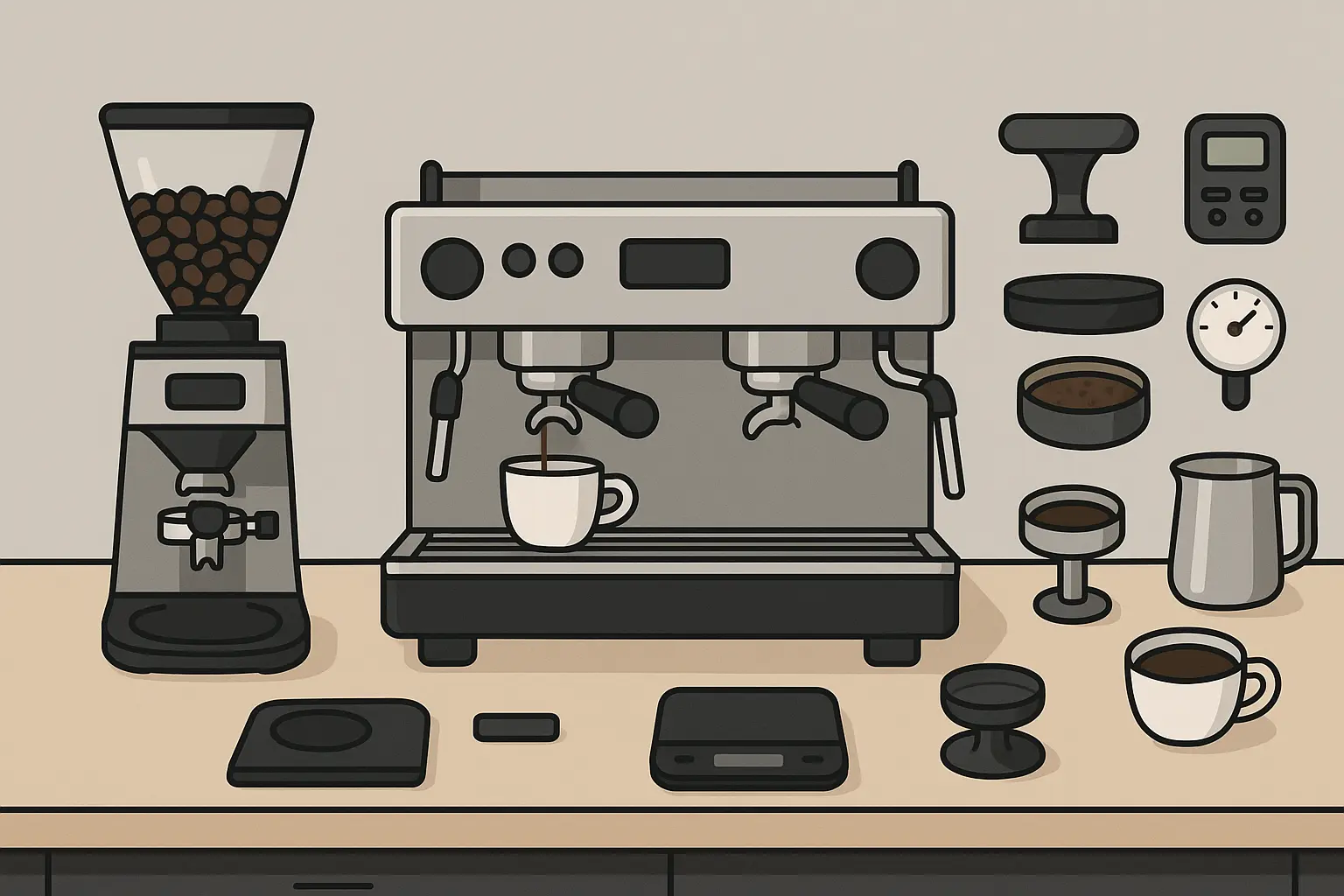
Turning Customers Into Your Biggest Advocates
Understanding the Complete Customer Journey
Every single interaction shapes how customers feel about your business. From when they first discover you on social media to the ordering process to what happens after they leave, each touchpoint either strengthens or weakens the relationship.
Mapping out your customer journey reveals opportunities for improvement that you might completely miss otherwise. Maybe your ordering process is confusing, or your seating arrangement creates bottlenecks during rush hours, or your follow-up communication feels robotic and impersonal. This approach is similar to how Instagram engagement calculations help businesses understand which touchpoints actually drive meaningful interactions instead of just vanity metrics.
The goal isn’t perfection – it’s being intentional about the experience you’re creating. When you understand how customers actually experience your business, you can make strategic improvements that have the biggest impact on satisfaction and loyalty.
Customer journey mapping reveals those critical moments that influence whether someone becomes a regular or never comes back. It’s about optimizing ordering processes, service delivery, and follow-up communications to strengthen relationships and encourage repeat visits.
Personalization That Doesn’t Feel Creepy
Remembering customer preferences creates genuine connection without requiring fancy technology or making people feel like you’re tracking their every move. When your barista remembers that someone always orders an oat milk cortado, that’s personalization that feels natural and appreciated.
Data collection through loyalty programs and POS systems can inform personalized recommendations, but the key is using that information to enhance rather than replace human interaction. Technology should support personal connection, not substitute for it.
Seasonal recommendations based on past purchases, birthday offers, and customized drink suggestions show customers that you pay attention to their preferences without making them feel like they’re being monitored. Case Study Coffee Roasters understand that personalization builds the kind of loyalty that transforms casual visitors into regular advocates.
Case Study Coffee Lounge’s approach to personalization shows up in their community-building efforts. They host events like “Case & Friends,” their Tuesday night DJ parties that started as intimate gatherings of twelve people and have grown to hundreds of attendees. This creates personal connections that transform casual customers into community members who return regularly for both coffee and social experiences.
Effective personalization combines human memory and attention with smart data use to create natural, appreciated recognition of customer preferences. It enhances rather than replaces genuine personal connection and service.
Making Money Beyond Just Selling Coffee
Retail Products That Make Sense
Selling whole bean coffee, brewing equipment, and branded merchandise extends your brand into customers’ homes while creating additional ways to make money. But retail success requires understanding margins, inventory management, and what customers actually want to buy.
Not every coffee shop needs to become a full retail operation. Focus on products that align with your brand and serve your customers’ real needs. If you’re known for education, sell brewing guides and equipment. If you’re community-focused, offer locally-made products that support other small businesses.
Gift cards, subscription services, and seasonal retail offerings can provide cash flow benefits and customer retention advantages beyond their immediate profit margins. Understanding these additional revenue streams becomes as important as tracking your core marketing ROI to ensure sustainable business growth.
Strategic retail expansion requires selecting products that align with your brand identity and customer needs while understanding the operational complexities of inventory management, margins, and purchasing patterns that are completely different from beverage sales.
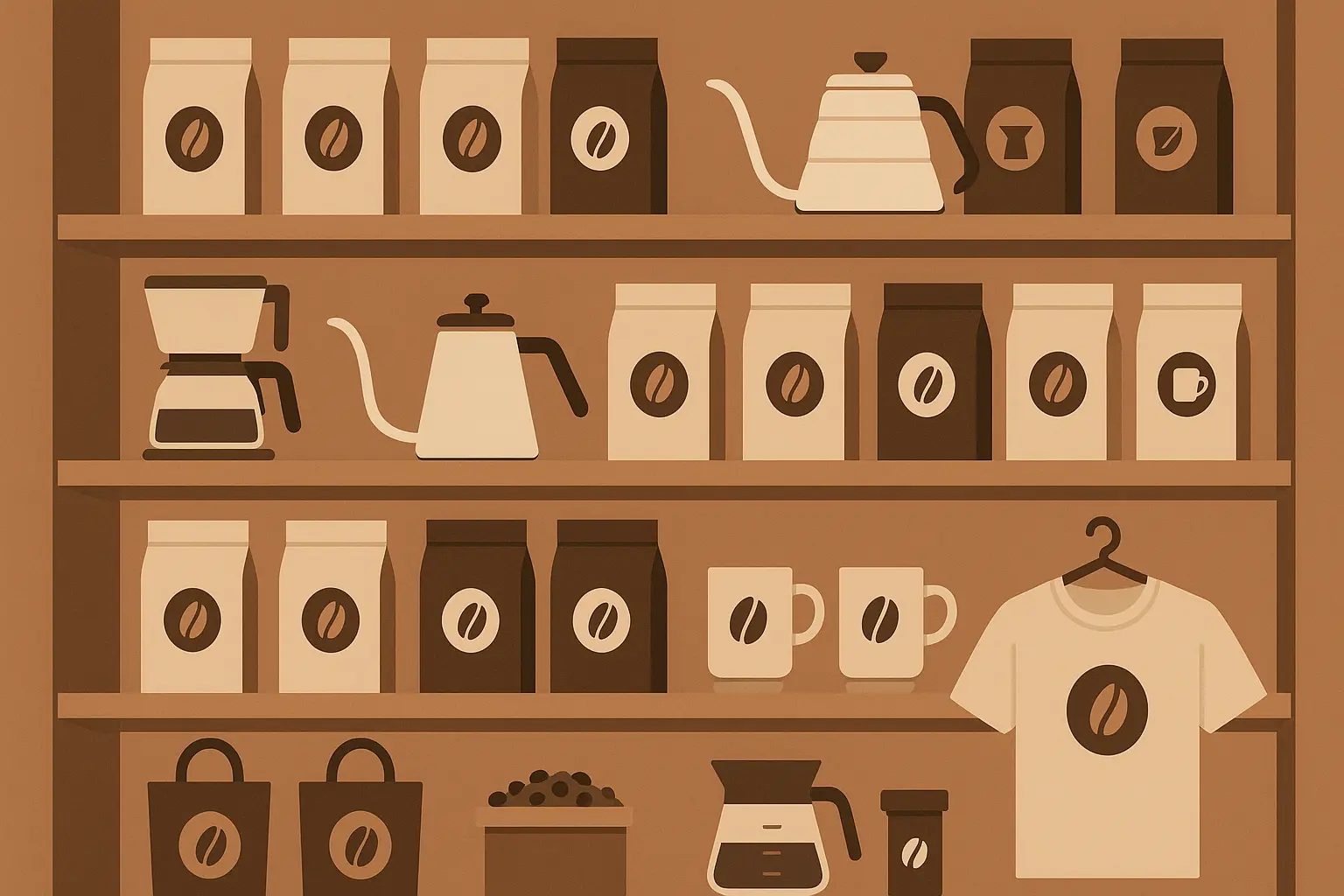
Event Hosting and Space Utilization
Your space represents a significant fixed cost that can generate revenue beyond regular operating hours. Evening events, private parties, corporate meetings, and educational workshops help you maximize what you’re already paying for in rent.
This requires flexible space design, additional staffing considerations, and marketing strategies that target different customer segments. But it also requires understanding that events can either enhance or completely mess up your regular customer experience.
Successful event hosting means establishing clear policies, pricing structures, and operational procedures that protect your core business while creating new opportunities to make money.
The success of Case Study Coffee’s event strategy shows through their “Case & Friends” Tuesday night events. What began as intimate livestreamed DJ performances have grown significantly – with one TikTok video about the events receiving “over 60,000 views” and translating into real attendance that “shot into the hundreds.” These free community events create additional revenue through beverage sales and build incredible customer loyalty.
Event hosting maximizes space utilization and creates premium revenue opportunities, but requires careful planning around flexible design, staffing needs, and policies that protect your core operations while serving different customer segments effectively.
Growing Smart in a Competitive Market
Local Market Analysis That Guides Decisions
Understanding your local market means more than just counting competitors on Google Maps. You need to understand demographic trends, spending patterns, commuting schedules, and community preferences that actually affect your business on a day-to-day basis.
Regular market analysis helps you spot opportunities for growth and potential threats before they become major problems. This includes monitoring competitor pricing and offerings, tracking local development projects that might bring new customers or competition, and staying aware of demographic shifts in your neighborhood.
The goal is making informed decisions based on actual data rather than assumptions or gut feelings. When you understand your market, you can adapt your offerings, pricing, and marketing strategies to maintain competitive advantages. Case Study Coffee Roasters exemplify this approach by continuously analyzing their Phoenix market position and adapting their community-focused strategy accordingly.
Effective market analysis involves understanding demographic trends, competitor activities, and community preferences to make informed strategic decisions about pricing, offerings, and positioning that maintain competitive advantages in changing markets.
Performance Metrics That Actually Matter
Tracking the right numbers helps you understand what’s working and what needs attention. Daily sales, customer traffic patterns, average transaction values, and customer retention rates provide insights for both day-to-day operations and long-term strategic decisions.
POS analytics, customer feedback systems, and financial reporting should support decision-making rather than just record-keeping for tax purposes. The key is identifying metrics that actually correlate with business success and tracking them consistently over time.
But don’t get lost in spreadsheets and data. Focus on metrics that help you serve customers better and operate more efficiently. Everything else is just noise that distracts from running your business.
The transformation timeline of Case Study Coffee Lounge demonstrates how quickly market conditions can change – owner William Douglas made the pivot from woodworking to coffee in just “five months after that fated appointment” where he discovered his tree allergy. This shows how responsive businesses can adapt to market opportunities and personal circumstances when they’re paying attention to the right signals.
Strategic performance tracking focuses on metrics that directly correlate with business success and customer satisfaction, using POS analytics and feedback systems to support decision-making rather than just keeping records for operational and strategic improvements.
Marketing That Actually Brings People Through Your Door
Effective marketing for local businesses requires understanding which high-impact content topics actually resonate with your community and drive real foot traffic rather than just online engagement that doesn’t translate to sales.
Content Marketing That Educates and Engages
Your marketing should reflect your coffee philosophy and expertise without being preachy or pretentious. Educational content about brewing techniques, origin stories, and seasonal offerings positions you as an authority while providing genuine value to your audience.
Social media content needs to showcase daily specials, behind-the-scenes operations, customer stories, and educational information. But here’s what most places get wrong – consistency matters way more than perfection. Regular, authentic content builds stronger connections than occasional polished posts that took three hours to create.
Photography of drinks and food, video content of brewing processes, customer testimonials, and educational posts about coffee create a content mix that serves different audience interests and platform requirements. Case Study Coffee Lounge demonstrates this approach through their authentic storytelling about their transformation journey and community events.
Educational content marketing establishes expertise and authority while providing genuine value to audiences through consistent sharing of brewing knowledge, origin stories, and behind-the-scenes content across multiple platforms and formats.
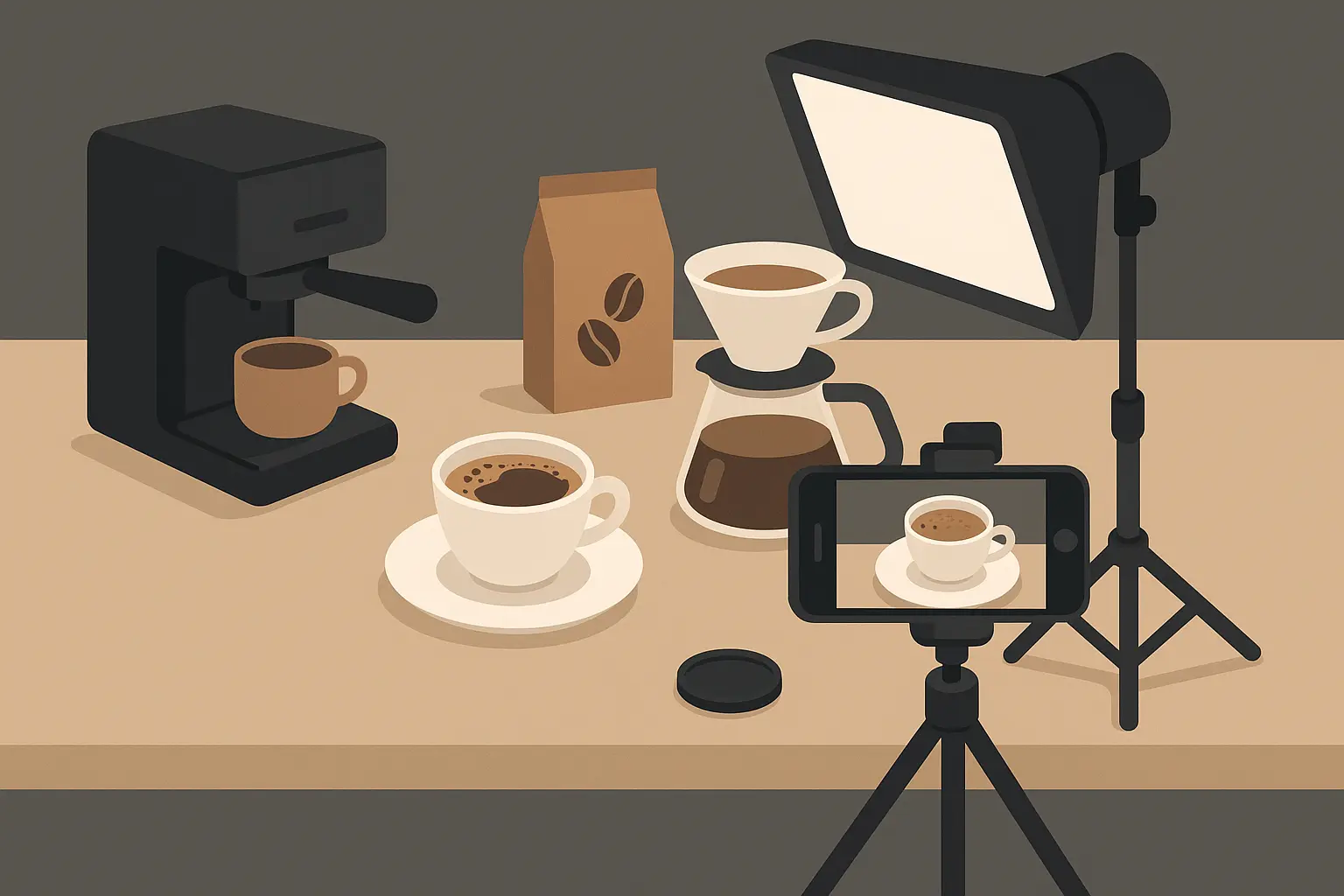
Digital Presence That Converts Browsers to Visitors
Your digital presence needs to work harder than just looking good on Instagram. Online ordering systems, mobile apps, and social media engagement should drive actual foot traffic and sales, not just brand awareness that doesn’t pay the bills.
This means optimizing for local search so you show up when people nearby are looking for coffee, maintaining accurate business information across all platforms, and creating digital experiences that encourage in-person visits rather than replacing them.
Loyalty programs, email marketing, and social media engagement create ongoing relationships that survive seasonal fluctuations and competitive pressures from new coffee shops opening down the street.
Case Study Coffee Lounge demonstrates effective digital marketing through their strategic use of social media for event promotion. Their TikTok content about Tuesday night DJ events generated significant online engagement that translated directly into physical attendance, showing how authentic, community-focused content can drive real business results instead of just vanity metrics.
Strategic digital presence optimization focuses on converting online engagement into physical visits through local search optimization, accurate business information, and digital experiences that complement and drive traffic to your physical location.
The Technical Side: Equipment and Quality Control
Equipment Management That Prevents Problems
Professional coffee equipment requires daily attention and regular maintenance to perform consistently. Espresso machine calibration, grinder adjustments, and water quality monitoring aren’t optional tasks you can skip when you’re busy – they’re what separate professional operations from amateur efforts that produce inconsistent results.
Understanding extraction variables (time, temperature, pressure, grind size) helps you troubleshoot problems and maintain quality standards even when things go wrong. But you also need maintenance schedules that people actually follow and backup plans for when equipment inevitably breaks down at the worst possible moment.
Alternative brewing methods (pour-over, French press, cold brew) require different equipment and techniques, but they also provide menu diversity and showcase different coffee characteristics that can justify premium pricing when customers understand what they’re getting.
Professional equipment management requires understanding extraction variables, maintaining calibration schedules, and implementing backup plans while utilizing alternative brewing methods to showcase coffee diversity and justify premium pricing through technical expertise.
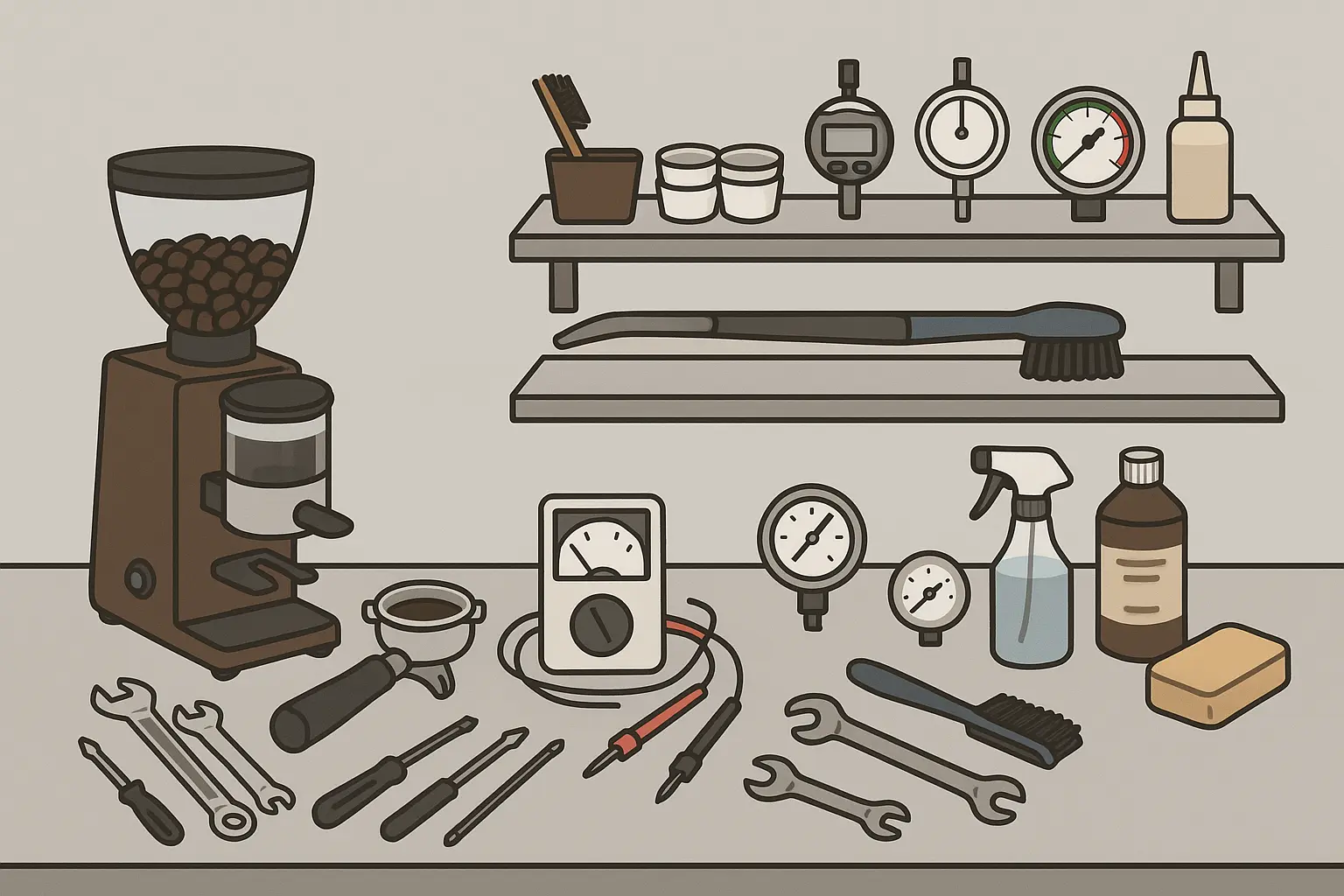
Water Quality and Its Impact on Everything
Water quality affects coffee flavor more than most people realize, and it’s one of those technical details that can make or break your consistency. Total dissolved solids, pH levels, and mineral composition impact both extraction quality and how long your expensive equipment will last.
Filtration systems, regular testing, and water chemistry monitoring protect your investment in equipment while ensuring consistent flavor profiles that customers can rely on. This technical knowledge becomes part of your quality story and competitive advantage when customers ask why your coffee tastes better than the place down the street.
Understanding water’s role in coffee extraction helps you troubleshoot flavor problems and maintain consistency across different seasonal conditions and equipment variations that would otherwise drive you crazy trying to figure out.
Water quality management through filtration systems, regular testing, and chemistry monitoring protects equipment investments while ensuring consistent flavor profiles and providing technical expertise that supports your quality claims and competitive positioning.
Equipment Maintenance Checklist:
-
Daily espresso machine calibration and cleaning (non-negotiable)
-
Grinder burr inspection and adjustment (affects every single drink)
-
Water quality testing for TDS, pH, and temperature
-
Steam wand cleaning and milk system maintenance
-
Alternative brewing equipment sanitization
-
Equipment performance logging (so you can spot problems early)
-
Backup equipment readiness check
-
Updated supplier contact information for emergencies
Seasonal Strategies That Keep People Coming Back
Menu Innovation That Creates Anticipation
Seasonal offerings create urgency and social media buzz while giving regular customers compelling reasons to visit more frequently. But seasonal success requires advance planning, reliable ingredient sourcing, and staff training on new recipes that they can actually execute consistently.
Limited-time beverages, holiday specialties, and seasonal food pairings should feel authentic to your brand rather than following generic trends that every other coffee shop is doing. Your seasonal offerings should reflect your coffee philosophy and customer preferences, not just what looks good on Pinterest.
Marketing campaigns that build anticipation before launch, social media content that showcases preparation processes, and staff knowledge about new offerings all contribute to seasonal success that actually drives revenue instead of just creating more work.
Successful seasonal strategies require advance planning, authentic brand alignment, and comprehensive marketing support to create anticipation and urgency while providing regular customers with compelling reasons for increased visit frequency.

Food Program Integration
Whether you’re partnering with local suppliers or developing in-house food preparation, your food program should enhance rather than compete with your coffee focus. This requires understanding food safety regulations, managing perishable inventory, and training staff appropriately without overwhelming your core operations.
Food offerings should complement your coffee program and serve your customers’ actual needs without overwhelming your operations or diluting your brand focus. Simple, high-quality options often work better than complex menus that stress out your kitchen and confuse customers.
The goal is creating additional revenue and customer satisfaction while maintaining operational efficiency and brand clarity that doesn’t leave you wondering what business you’re actually in.
Case Study Coffee Lounge shows successful food program integration through owner William Douglas’s pivot into kitchen artistry. After being forced to leave woodworking due to his tree allergy, Douglas found “so much artistry” in cooking and developed “house-made syrups for the coffee shop” along with a food menu featuring “savory and sweet crepes including Nutella and banana, as well as avocado toast and overnight oats.” This shows how food programs can reflect the owner’s creative journey while complementing the coffee experience instead of competing with it.
Food program integration requires balancing operational complexity with revenue opportunities, focusing on high-quality options that complement coffee offerings while maintaining brand focus and operational efficiency through strategic supplier relationships or controlled in-house preparation.
How The Right Marketing Partner Can Transform Everything
Look, running a successful coffee lounge means juggling dozens of moving parts – from perfecting extraction techniques to managing inventory to creating genuine community connections. Marketing often gets pushed to the back burner when you’re dealing with broken espresso machines and staff scheduling, but it’s actually what determines whether all your other efforts pay off.
Here’s what I’ve learned: most coffee shop owners are great at coffee but struggle with marketing because it’s a completely different skill set. You can make the best cortado in town, but if people don’t know you exist or can’t find you when they’re looking for coffee nearby, none of that expertise matters for your bottom line.
The Marketing Agency specializes in helping local businesses cut through the noise and focus on marketing strategies that actually drive foot traffic and sales instead of just pretty Instagram posts. Their data-driven approach means you’re not gambling on generic tactics that might work for other businesses but don’t fit your specific situation or budget.
What makes their approach different is the focus on performance-based results rather than vanity metrics that look good in reports but don’t pay your rent. They can help you identify which digital channels will actually bring coffee enthusiasts and remote workers through your door, optimize your local search presence so you show up when people are looking for coffee shops nearby, and create targeted campaigns that speak to different customer segments throughout the day.
Their real-time optimization capabilities mean your marketing budget gets adjusted based on what’s actually working, not what someone thinks might work based on outdated industry averages. For a coffee lounge where every marketing dollar needs to directly impact sales, this kind of accountability makes the difference between sustainable growth and wasted spending on strategies that don’t deliver results.
If you’re ready to stop guessing about your marketing and start seeing measurable results that grow your coffee business, schedule a discovery call with The Marketing Agency to learn how their proven systems can work for your specific situation and market.
The Marketing Agency offers coffee lounges data-driven marketing solutions that focus on measurable results rather than vanity metrics, providing real-time optimization and accountability that directly impacts foot traffic and sales growth instead of just looking good on paper.
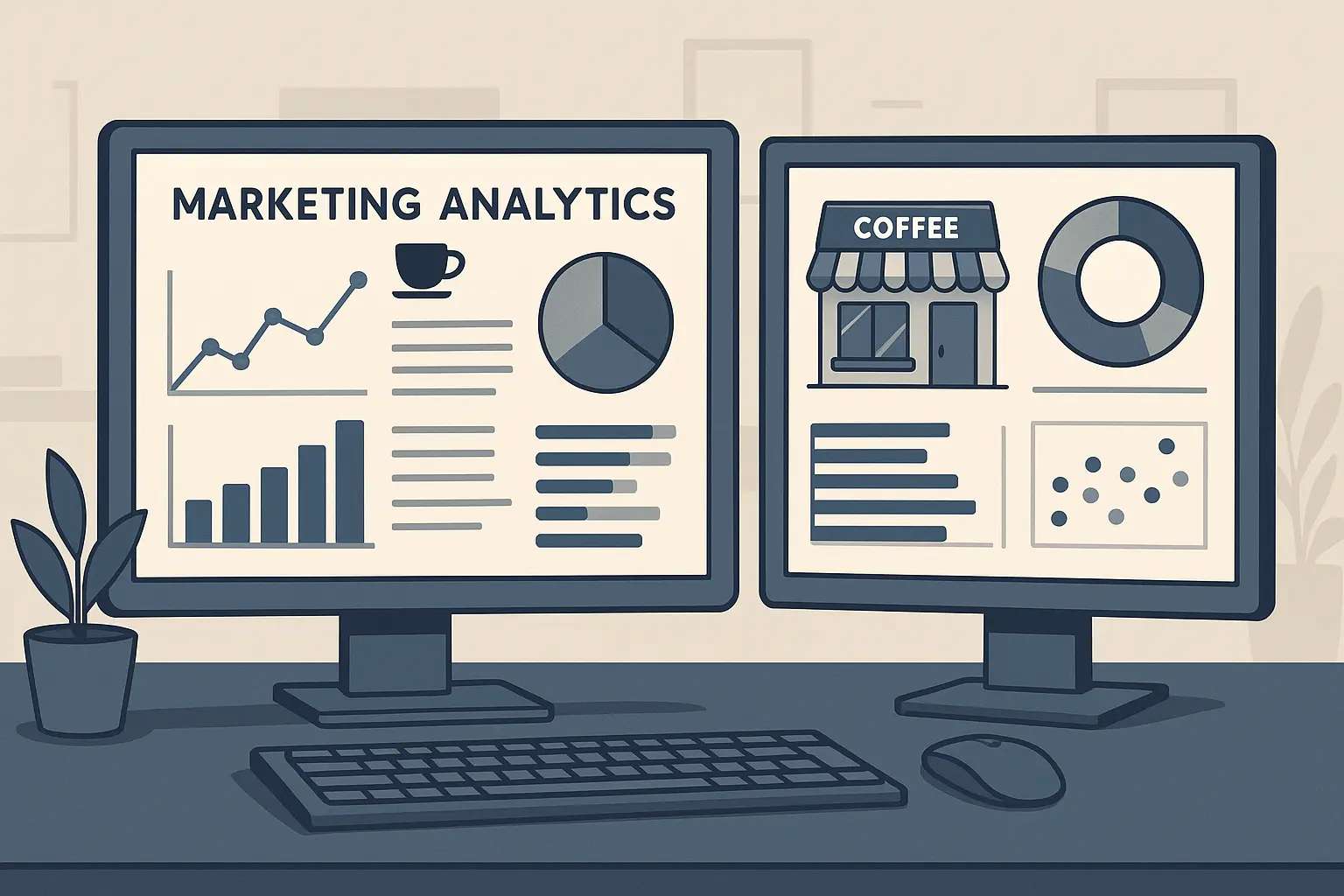
Final Thoughts
Building a successful coffee lounge requires more than passion for great coffee – though that passion definitely helps during the tough days when equipment breaks and customers complain. It demands strategic thinking about every aspect of your business from supply chain management to community engagement, and the willingness to treat it like a real business rather than just a hobby that pays the bills.
The technical aspects matter enormously. Equipment calibration, water quality, staff training, and quality control systems form the foundation that everything else builds upon. But the human elements – understanding your customers, creating welcoming spaces, and fostering genuine connections – are what transform a good coffee shop into a beloved community gathering place that people actively recommend to their friends.
Success comes from balancing operational excellence with strategic growth initiatives that make sense for your specific situation. Revenue diversification through retail sales, events, and educational programs provides stability while community engagement and digital marketing drive sustainable growth. The key is implementing these strategies systematically rather than trying to do everything at once and burning yourself out.
Most importantly, remember that every decision should serve your core mission of creating exceptional coffee experiences. Whether you’re choosing seasonal offerings, designing your space, or selecting marketing strategies, maintaining focus on what makes your coffee lounge unique will guide you toward decisions that strengthen rather than dilute your brand.
Will this guarantee success? Honestly, no. Running a coffee shop is still hard work with thin margins, long hours, and unpredictable challenges that no blog post can fully prepare you for. But these strategies give you a fighting chance in a crowded market where most new coffee shops close within two years. And sometimes, that fighting chance is all you need to build something that becomes an integral part of your community’s daily rhythm.


